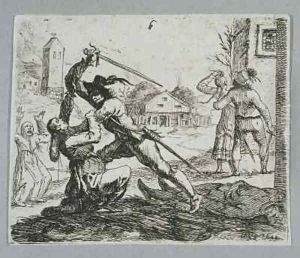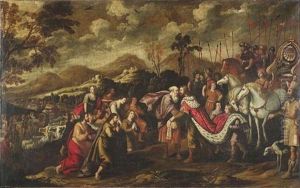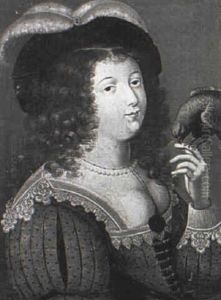Hans Ulrich Franck Paintings
Hans Ulrich Franck, also known as Johann Ulrich Franck or Franks, was a significant German Baroque painter, born in 1603 in Kaufbeuren, Bavaria. Not much is documented about his early life or training; however, it is known that his career was mostly active in the city of Augsburg. Franck is renowned for his dynamic and expressive style, which was quite influential in the development of German Baroque painting.
Hans Ulrich Franck's work was characterized by dramatic use of light and shadow, a technique known as chiaroscuro, which was popular among Baroque artists and is well exemplified in the works of Caravaggio, whom Franck might have been influenced by either directly or indirectly through Caravaggio's followers. Franck's subject matter varied widely, including religious themes, allegories, and mythological scenes, as well as genre paintings depicting everyday life.
Franck's paintings often depicted scenes with a sense of immediacy and emotional intensity, which was in line with the Baroque movement's emphasis on evoking an emotional response from the viewer. His use of color was rich and vibrant, helping to enhance the dramatic effect of his compositions.
Despite his evident talent and the impact he had on the period's art, Hans Ulrich Franck did not gain the same level of lasting fame as some of his contemporaries. This could be due to a variety of reasons, including the possible overshadowing by more prominent figures of the time or the regional nature of his career.
Hans Ulrich Franck's death occurred in 1675 in Augsburg. His legacy is preserved in the works that remain and through the influence he had on the art of southern Germany. Though not as widely recognized as some of his Baroque counterparts, his contributions to the movement enrich our understanding of the period's artistic diversity and expression.


